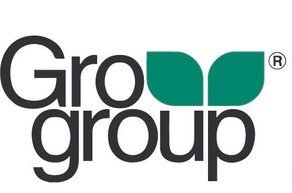Manufacturer FAQs
Does participating provide a manufacturer with an opportunity to increase profits?
Gro Group is equally owned by all of its Distributor members. Manufacturers who participate in the Network are considered "A" list vendors with Distributors and become a top focus for the over 550 sales people who service thousands of retail locations across the United States and Canada.A Single Distributor reaches hundreds of retail accounts and our members are committed to working with manufacturers who partner with them through Gro Group. As a Partner, a manufacturer has the ability to service regional markets efficiently and economically through Gro Group Distributors.
A Partner is also encouraged to attend the Gro Group Kick-Off annually in June to meet individually with key decision makers from every Gro Group Distributor at a key planning time for their Trade Show.
What are the steps for becoming a Gro Group Partner?
Contact Corporate's Vice President, Merchandising, for an initial discussion.A manufacturer's product line is then reviewed with our Merchandise Team to determine interest. Upon confirmation of interest, members of the Corporate team work with the manufacturer to establish a National Group Program (NGP) and to develop a Merchandise Program.
What is a National Group Program (NGP)?
An NGP, a prerequisite for all manufacturers who wish to participate in the Network, is an agreement between a manufacturer and Gro Group Inc. on behalf of its Distributor members. It outlines the specifics of the partnership, and it has a three-year initial term to allow Distributors adequate time to develop the program.What is a Merchandise Program?
A Merchandise Program provides all of the information Distributors require to consider a Partner's product line and related program offerings. Distributors value the Merchandise Program as a key component to positioning themselves as reliable sources for quality products they can offer to their customers. Standardized program forms provide the structure to help present your program to Distributor members in a streamlined format. The Merchandise Program requires an annual review to ensure its long-term effectiveness in the market.What is a Seasonal Promotional Program (SPP)?
An SPP is an important subset of an overall Merchandise Program. The objective of this key promotional program is to provide the Independent Retailers with feature key items and drive items they would consider must have to build sales and aid their competitive position in their market. The items in this program should be aggressively priced, high performing products with special freight and dating terms. They are considered by Distributors for showcasing in Power Alley/Pallet Alley presentations at their fall Trade Shows.What is the main objective of Power Alley/Pallet Alley presentations at Distributor Trade Shows?
These presentations offer Independent Retailers aggressively priced feature key items, drive items, and pallet assortments with special freight and dating terms.What are feature key items?
Feature key items are seasonally appropriate products agreed upon by our Merchandise Team and the manufacturer as having significant sales potential.What are the main features of drive items?
Drive items are specific products with high promotional value that promote traffic building and impulse sales in an Independent Retailer's store.How do Partners provide product and pricing information to Distributors?
Gro Group has a standard format known as the Product Data Set. It is utilized by the majority of Distributors as they view it as an important tool for buying, shipping and receiving product from a manufacturer. See Manufacturer Advantage page for more information.How do Distributors access information about Partners in the Network?
Gro Group has online file sharing for authorized users. Complete and up-to-date information about each manufacturer in the Network is accessible to them 24/7 which enables them to make informed purchasing decisions and to better present a manufacturer's product line to their customers.
